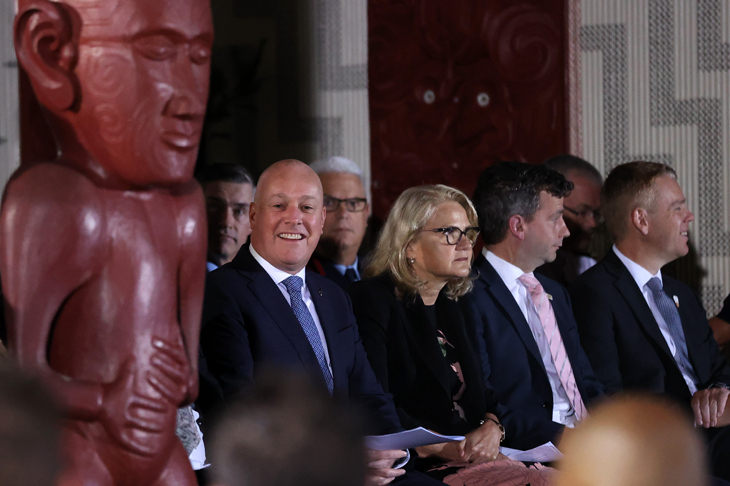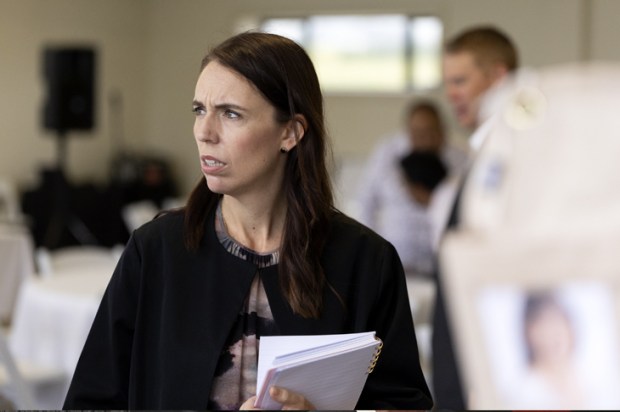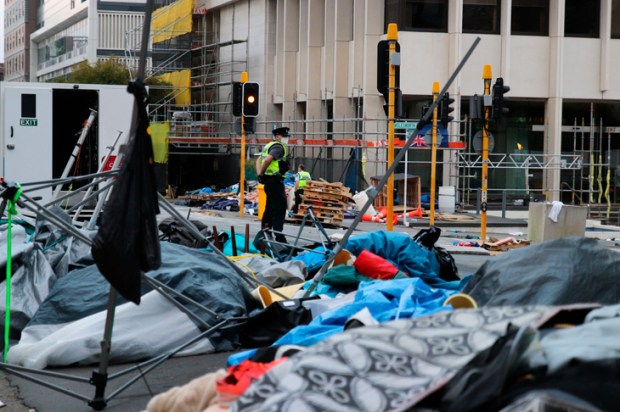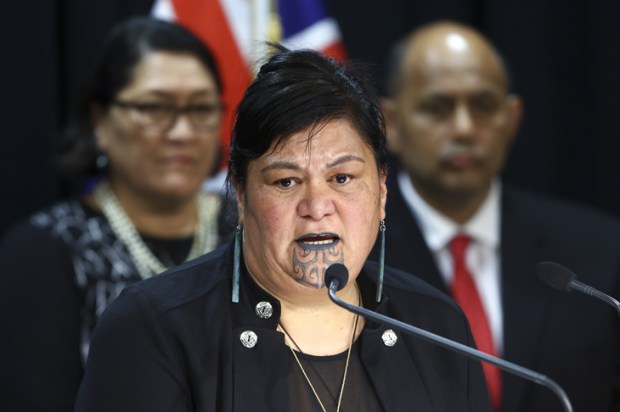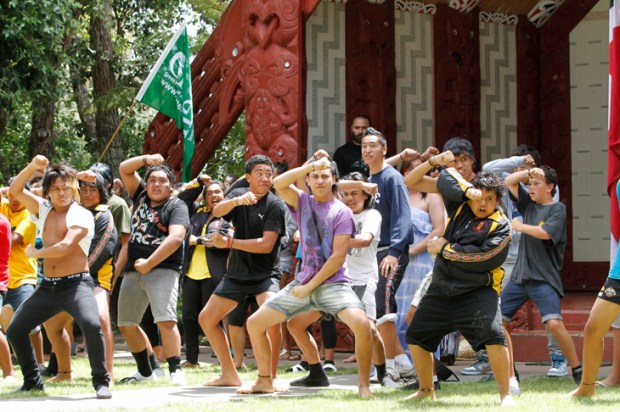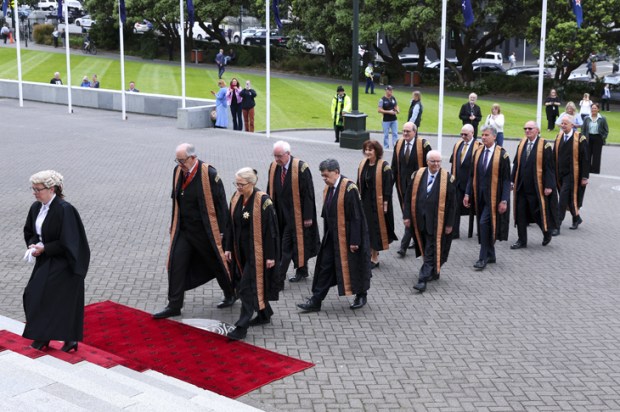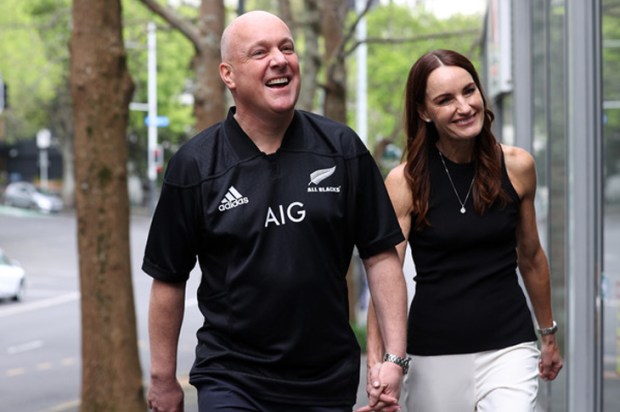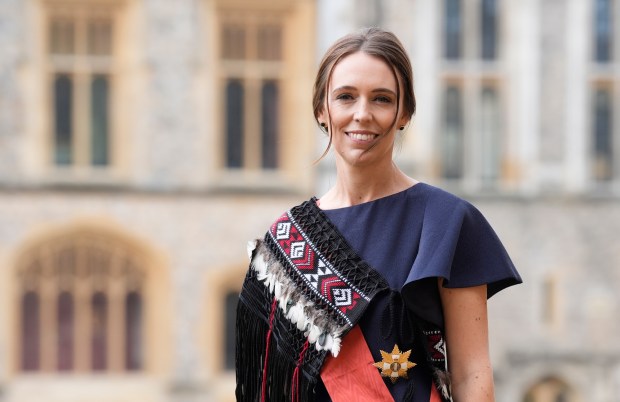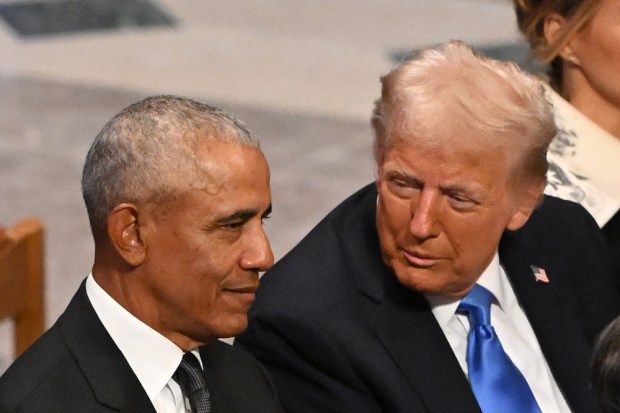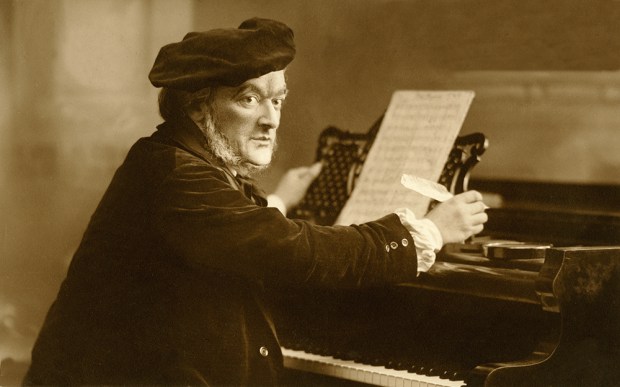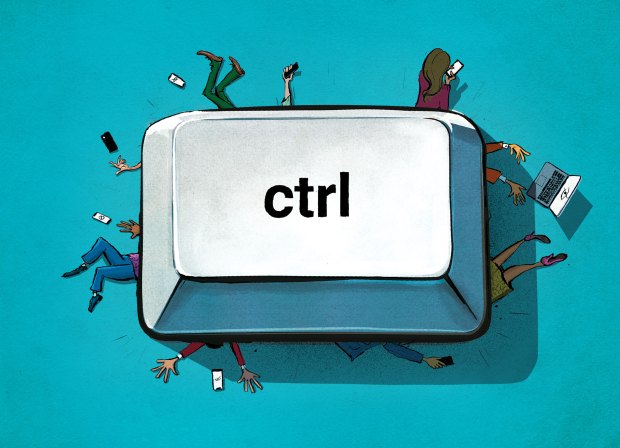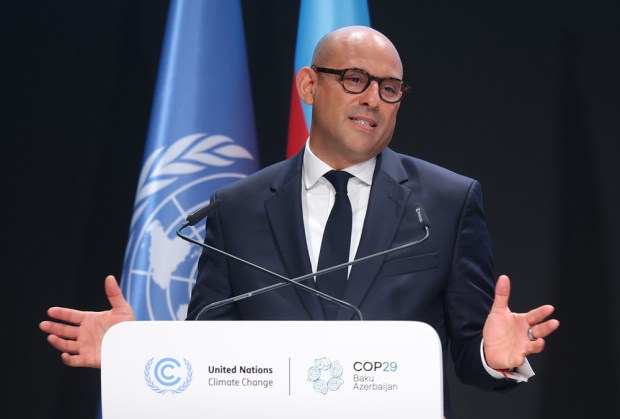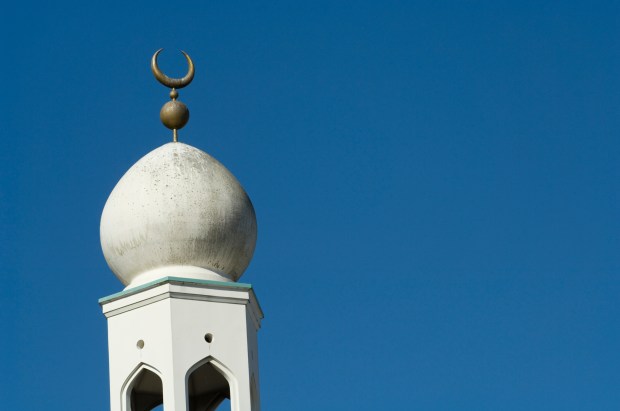Recently querying why New Zealand governments make annual January pilgrimages to the Maori Pa at Ratana, to celebrate the birth of its founder, I received some interesting information, in response to these facts.
In 1939, at the outbreak of World War II, Maori solders joined the 28th Maori Battalion. With most Maoris solidly behind their people, this fighting group achieved an outstanding reputation on the battlefields of Greece, Crete, North Africa and Italy. However, when Japan entered the war in 1941, the Ratana people in Hawke’s Bay began wearing badges depicting the Rising Sun of Japan, with whom their sympathies apparently lay. It turned out the Ratana movement had made some agreement with the Japanese before the war, and the local group were hoping for an invasion. Aware of this, police and Home Guard men were sent to confiscate the guns with which the group were armed. These were kept overnight in a room in the schoolhouse at Rangiahua until they could be taken away. The schoolteachers’ son at this school later told how thrilled he was to have these guns temporarily stored in his bedroom.
The Ratana’s affinity for the Japanese is white-washed on a Maori website as ‘Pakeha paranoia’, although nothing of the sort. No mention of this appears in our official history. However, the Hawke’s Bay experience was replicated elsewhere. Interestingly, in 1937, with schools closed because of an outbreak of typhoid fever in the bay, the local schoolteacher, visiting New Plymouth, photographed a Japanese ship anchored in the harbour there.
The Ratana Church, a religious and political movement, was established by Tahupotiki Wiremu Ratana in 1918 at Ratana Pa, in the North Island. In 1924 the Japanese flag flew over the church settlement. In 1928 its temple was opened by a Japanese bishop. Ratana thought Maori and Japanese were among the lost tribes of Israel. Relations with the Japanese were very good, and a visit there in 1924 was the highlight of a trip taken overseas to gain support for his political movement.
But does any of this explain the annual government pilgrimages to the Ratana Pa, headed this year by Prime Minister Christopher Luxon?
This question brought an interesting response from a New Zealand historian whose challenging of politically correct assertions about our co-history have been anathema to well-endowed Maori academia. He relates how during World War II, his father’s job, as the chief petty officer aboard USS Roamur, was to listen to Morse code or whatever radio messages could be picked and decoded. This ship was part of a convoy taking supplies up to Guadalcanal and other hotspots in the Pacific. In 1955, there was a reunion for American expat servicemen who had married New Zealand brides, later returning to live in New Zealand. A day after the celebration, his father took him to the venue at Parnell, in Auckland. He vividly recalls his father talking at length to another US serviceman about ‘the Maori Princess’, as he put it, referring to Princess Te Puea Herangi of Tainui, whom US intelligence had reportedly picked up having a shortwave radio transmission tête-à-tête with the Japanese, offering her people’s support for a Japanese takeover of New Zealand, if the Japanese would give recognition to her being the Queen of the country. This communique of Princess Te Puea to the Japanese was said to be well-known among US personnel. It was of grave concern, particularly in relation to convoys leaving New Zealand ports under a cloak of secrecy, only to have what they regarded as traitorous coastwatchers among certain Maoris reporting their departure to the Japanese.
At least some members of the New Zealand public were apparently also aware of Te Puea’s transmission, and regarded her attempt to cut a self-serving deal with the enemy as worrisome treachery. As recently as 2006 another historian recalled a conversation with a leading US intelligence officer detailing the same concern. Te Puea, however, is widely respected for outstanding leadership and indefatigable efforts on behalf of her people.
Fast forward to today and the Coalition government of National, ACT and New Zealand First faces irresponsible threats of violence and blustering about a possible civil war from the usual hotheads among part-Maori with no concern whatever for democratic outcomes. On the contrary, their intent continues to establish co-governance, or co-management, with superior rights given to those of Maori descent – by no means supported by most part-Maori. The recent Waitangi Day, commemorating the signing of the Treaty of Waitangi, had our political leaders facing the usual ‘challenge’ on entering the Treaty grounds – designed to be answered peacefully by picking up a sprig. However, the extent of intimidation levelled at them prior to their doing so had semi-clad, tattooed ‘warriors’ yelling, mouthing and brandishing taiaha (hand weapons), a tasteless exhibition of virtual bullying which many New Zealanders find outdated and repulsive. The rudeness of those trying to drown out the addresses of the politicians – their invited guests – is an annual event. Many now question why we persevere with this farce.
The call to replace Waitangi Day with New Zealand Day, embracing all New Zealanders, rather than continue to let it be captured by those advocating Maori supremacy, is gathering momentum. However, a call has also come – what media have called ‘a royal proclamation’ – from Kingi Tuheita, regarded by some Maoris as their king, for a hui (meeting) to unite Maori to hold the government to account.
The most flagrant attack on our democracy today has political activists posing as journalists. A shocking new document reveals the subversive intent behind the Public Interest Journalism Fund established by Jacinda Ardern’s government. This slush fund contains provisions requiring compliant journalists and television personnel to primarily focus on Maori issues; to support the canard that the signing of the Waitangi Treaty established a virtually legal ‘partnership’ between Maori and the Crown – while arguing that Maori never ceded sovereignty to Britain – and to support the myth that colonisation has perpetuated racism and inequities. These media are to prioritise today’s largely reinvented ‘Maori’ language; to preferentially employ Maori staff and ensure the media present news in a way favourable to Maori.
As then, so now. Given this ongoing attack on balanced and objective reporting – and repeated attempts to undermine our democratic procedures – including with threatened violence – what next?
Got something to add? Join the discussion and comment below.
You might disagree with half of it, but you’ll enjoy reading all of it. Try your first month for free, then just $2 a week for the remainder of your first year.

